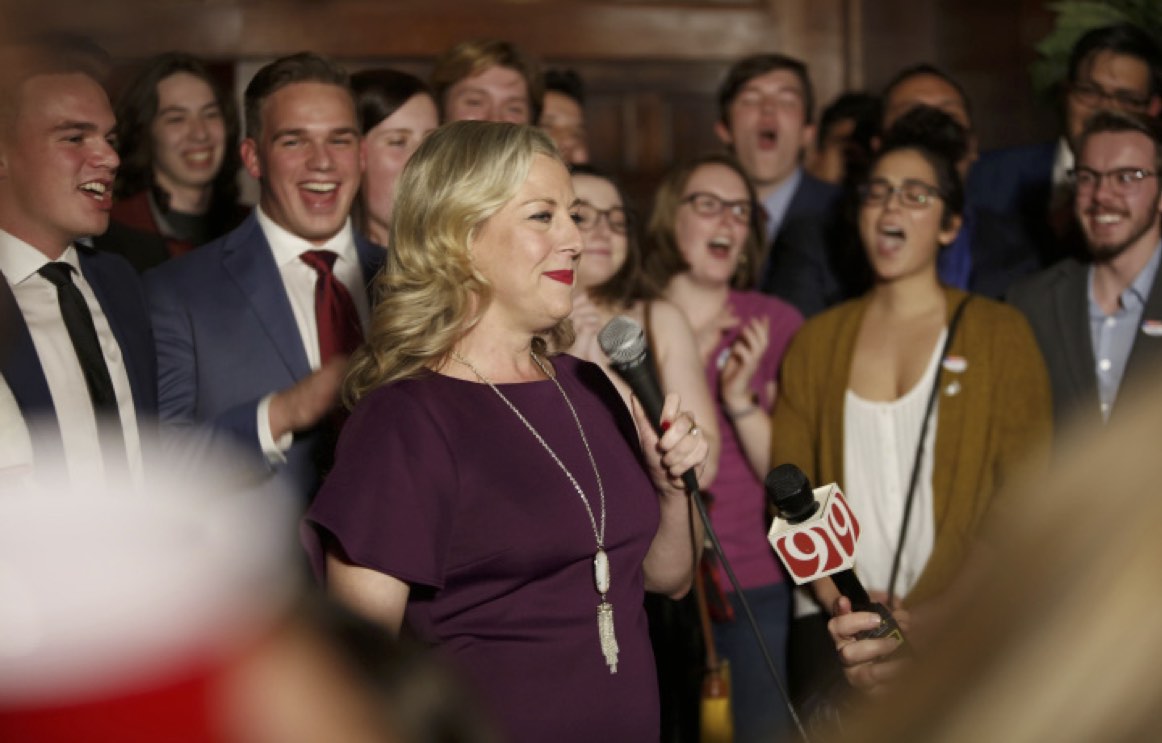Politically, Women Did Well in 2018


On November 18 of last year, Sen. Dianne Feinstein made a bold forecast.
“I predict based on what I see out there that we are going to have another Year of the Woman,” Feinstein said, referencing the year she was first elected to Congress alongside many other women in 1992.
The year that followed was one filled with chaos, tragedy, and hope. This year, there have been 325 mass shootings as of this article’s publication—an average of nearly one each day. Several of these were horrific enough to garner widespread national media coverage.
There was also the border separation crisis, where immigrant children were taken from their parents. This was the result of stricter interpretation of current immigration policy. Many of the children are still unable to be located by the federal government, and remain separated from their families.
There was also a national teachers’ strike, of which Oklahoma was one of the earliest, most major contributors. The state’s teacher strike ended after Gov. Mary Fallin signed a tax bill raising teachers’ pay.
The teachers’ strike turned out to be a harbinger of increased civic activism. The Bipartisan Policy Center analysis of official election data found participation was up across the board — in 42 states, every geographic region, and among both Democrats and Republicans.
Democrats especially showed increased enthusiasm, with 9.4 million more voters than four years ago for a total of 22.9 million ballots cast. Republicans saw an increase of 4 million voters over their 2014 totals to 20.4 million ballots cast.
And it turns out, Feinstein’s “Year of the Woman” prediction was prophetic. Over the past year, tens of thousands of women have expressed interest in running for public office, and that translated to a significant increase in women on the ballots.
Oklahoma saw evidence of that with countless teachers winning public office across the state, as well as the surprise election of Kendra Horn to the US House of Representatives, in Oklahoma’s Fifth district. Horn, a Democrat, will take over for Steve Russell, a Republican.
Nationally, the Democrats’ victory in taking control of the House also translated to an increase in female representation in Congress. Of the fifteen seats Democrats flipped from Republicans, all were held by men. Eleven of those were won by women.
One even became Virginia’s first openly transgender person to win elective office, unseating an opponent of LGBT rights. Five women also won non-voting delegate seats, representing American Samoa, the District of Columbia, Guam, Puerto Rico and the Virgin Islands.
In Tulsa, six of nine city councilors are currently women, and that number won’t change when a new class of councilors is sworn into office on Monday.
The hot-button nature of the female-centric issues this year can be found across all media platforms and several major outlets. This newspaper even had a hand in that, devoting an entire issue to the female experience in America.
This year, as most years in politics, can be overwhelming, heartbreaking, and terrifying. We can’t really predict what 2019 has in store for us; however, this year of participation and drive should be first hand proof, and a reminder that this democracy is not yet broken. True equality isn’t too far away to reach, but there is work yet to be done. Voices matter, and showing up matters.
Here’s to hoping everything we saw in 2018—the good, the bad; the uplifting, and the terrifying—lead to continuing improvements and public involvement in 2019.